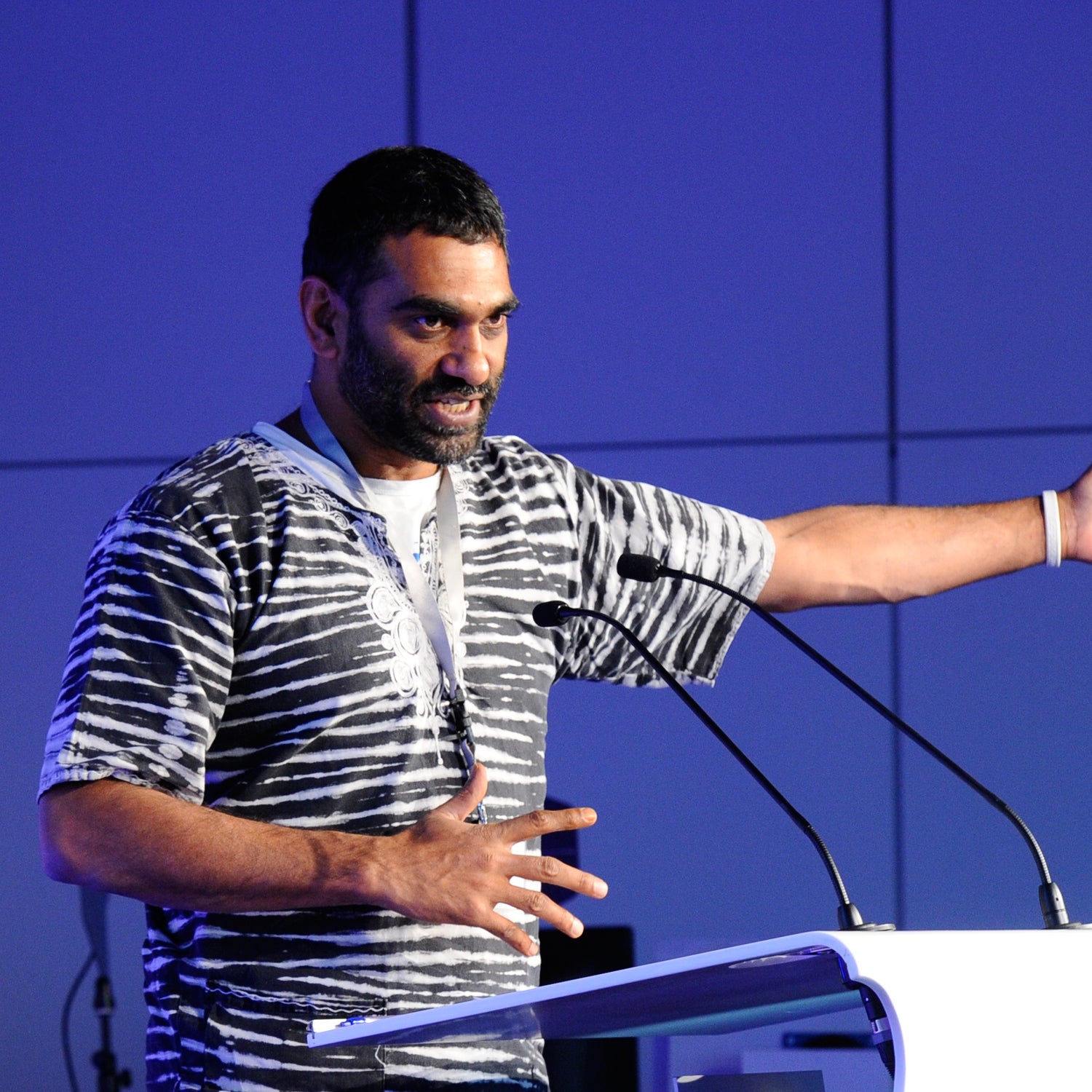Greenpeace International executive director Kumi Naidoo that he will step down from his post by the end of the year in order to return to South Africa, his home country.
“Part of my plan is to return to South Africa and lend my support to the growing struggle for a just energy future,” Naidoo said in the statement.
Naidoo, whom I profiled for the April issue, was recruited in 2009 to turn around what was then a struggling environmental advocacy organization. The group was perceived as being both too northern and stunt oriented. During his tenure, Kumi confronted both issues. He cooperated behind-the-scenes with corporations to realize change but also wasn’t afraid to resort to direct action campaigns when negotiations failed. To fix the organization’s “northern,” problem, he redirected people and funds away from traditional European environmental strongholds to the global East and South where, Naidoo says, the climate war will be won or lost.
This move initially created friction within the national branches of Greenpeace in the Netherlands and Germany. Last year, members of the Dutch national office asked Naidoo to reexamine his role following a minor scandal involving one of Greenpeace International’s top officials flying regularly between Luxembourg and Amsterdam on the company dime. Then, in December 2014, Greenpeace activists led by members of the German office entered a protected area near Peru’s Nazca Lines, sparking international outrage.��
Naidoo doesn’t have a new job lined up yet. “There are various options and I don’t want to make any decisions now,” he said. “What I’m very clear about is that I want to be in South Africa to help the country transition to clean renewable energy future.”
Last December, just after the Nazca fiasco, Naidoo’s Skype away message read: “All I want for Christmas is a New Year.” It appears he’s now taking steps to ensure a change. I spoke with him yesterday, after the news of his resignation broke. He told me he came to the decision between late February and early March, and that it was primarily a function of being drawn to South Africa. He doesn’t have a new job lined up yet. “There are various options and I don’t want to make any decisions now,” he said. “What I’m very clear about is that I want to be in South Africa to help the country transition to clean renewable energy future.”
He also said Greenpeace’s board of directors didn’t push him out, and that the Nazca Lines stunt and its fallout had “absolutely nothing” to do with the decision. I found this hard to believe, given the intense scrutiny Naidoo faced and his own deep anger over the event, which appeared to fly in the face of everything he stands for. Still, he was adamant. “We’ve faced lots of challenges and attacks,” he said. “When the Arctic 30 happened”—an event that saw members of Greenpeace —“some said that was too risky. These are challenges that come up in a risk-taking organization.”
But what of Greenpeace, a 44-year-old organization going through a prolonged mid-life crisis? Yesterday, Kalee Kreider, a former advisor to Al Gore, tweeted, “If past is prologue, GP will now reverse some of the changes,” referring to the plan to focus on Asia, Africa, and South America. I asked Naidoo about that. Would the organization revert?
“No, no, no.” he said. “That was the key question I was asking myself. People had to go through a process to get to this point. But when I could answer that there is absolute commitment to this without any part of the organization being hesitant, that was the key part of me feeling comfortable to make this decision. It is all on track and there won’t be a slippage.” There will, however, be a new boss, and new bosses usually make their own changes.


